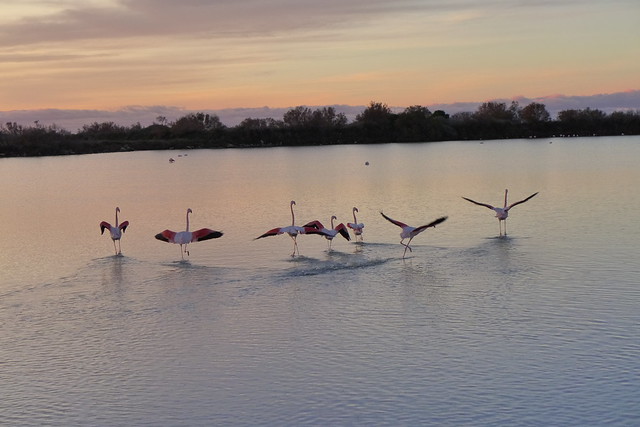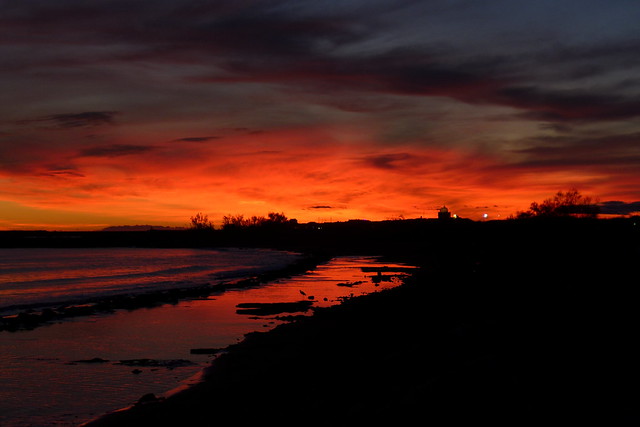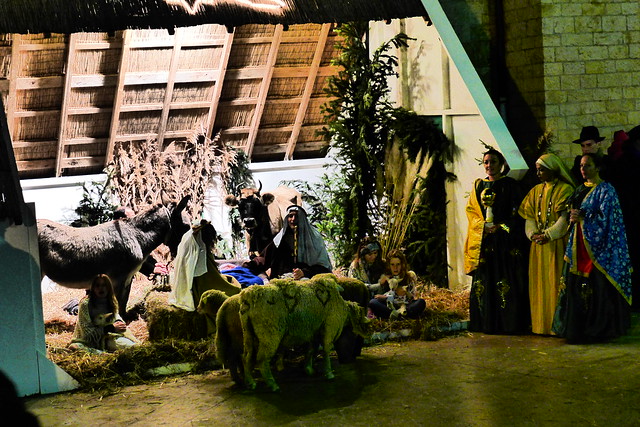The Sea!
In the evening of December 23rd, we reach the south coast of France. We find a road that ends in a sandy beach and after a short walk to greet the sea, we bed down for the night.
What better way to spend the morning of Christmas eve than going for a swim? The sun is out at 8am and we have a huge sandy beach all to ourselves. The water is pretty cold, really refreshing and invigorating. After the swim, we spend an hour doing our favourite things – Frank does some cooking and I take my violin out to the shore and play to the sun and the waves. Those irish tunes really go well with the sound of waves lapping on the shore and the wind carrying the notes away.
I notice people on the beach listening to me from afar. After a while a man approaches me. It’s wonderful that you play for free for the people on the beach he says. I tell him I’m playing more for the elements, for the sun and the sea, than for the people. He’s undeterred. Hearing you made me start to sing to the sea. I know some Corsican songs and he proceeds to sing to me. But then suddenly it seems he remembers that really he’s a shy person, so he turns around and says, well, I need to go now, bye-bye. I want to invite him to the van and let him hear our CD of Corsican songs, but he’s gone as fast as he arrived, leaving me in mid-sentence. Admittedly, my French is still lacking complete fluency, so maybe he thought I’d finished.
After a leisurely breakfast, we tootle on eastwards along the coast. Soon we enter the Camargue with its tell-tale signs of rice paddies, black bulls and white horses. This is such an amazing landscape and the wide horizons make for an incredible light. We drive all the way down to its southermost point, Les-Saintes-Maries-de-la-Mer. It’s the day of Christmas eve and we take our bicycles and ride along the long dam that separates the mudflats from the beach, looking out for flamingos, herons, cranes and many other smaller but equally exciting birds.
The landscape is wide open, windswept and beautiful and the deep silence is only broken by the flutey calls of the many birds wading in the mudflats.. The sun shines hard and warms us up until it drops in a spectacle of flaming colours and a bitterly cold wind sets in that pushes us back to the village.
We take a stroll around the village to see if anything is going on tonight and we are told that there’ll be a nativity scene outside the church at 10.30pm, before the midnight mass, where people will wear traditional costumes and play local folk music.
We go back to Emma, have a delicious dinner and a quick rest before wrapping up extra warm to go and watch the performance.
We were not prepared for this extraordinary spectacle. To start with, all animals are real. The ox is played by a cow but everything else is absolutely spot on. The donkey is tied to a heavy block of concrete though, discreetly hidden in a bale of hay, just in case it is suddenly fed up with standing by the manger and decides to go home. There’s a young couple with their real baby playing the holy family, and the three wise men are exchanged for three wise women, two of them representing the patron saints of the village.
This is a serious event and the characters are predominantly adult, as is the audience, consisting mainly of locals too. A simple script is read out via microphone and the characters respond by creating tableaus to support the story. Baby Jesus doesn’t like being put in the crib right under the ‘Oxen’s’ muzzle, but that’s how the story goes and there he’ll stay until the next tableau, whether he bawls his head off or not. To be fair, Mary does keep half an eye on the ‘Ox’ who seems bent on licking the baby back to sleep. It wouldn’t do if baby Jesus was nibbled, so stagehands discreetly move around in their very unconspicuous leather bikers outfits with armfuls of hay to distract the lowing cattle.
The cue for the sheep brings in some more commotion, as mother sheep does not want to be separated from her two lambs, so she barges everyone in her way and finally jumps into the manger, disappearing front left.
At the end of the play the priest arrives – hauling us back from the birth of the godchild to today’s formalised religion. His speech is interspersed with the local dialect, Provençal, and at the he end invites everyone to come into the church. To our surprise, this also includes the animals and so for the first time, I see a donkey in the middle of a church rammed full with members of the congregation. The little lambs are dragged along rather unceremoniously by their front legs – I guess that’s how newborn lambs are carried, but it looks rather painful – and worried mum is galloping behind.
The nativity scene carries on inside the church with various donations being made, including the largest, most beautiful fish caught that day, and the church resounds to prayers for the sea to be rich in fish next year and to have good harvests on the land. There is a seriousness in the way all the adults come and genuflect in front of this baby, dropping off livestock, bread and fish, a direct and heartfelt emotional connection to the Christmas messsage like I haven’t seen or felt in many years.
For every plea made on behalf of the local community, there is also a reminder to include in our thoughts those who are without shelter, who have lost their families, who don’t have enough to eat and are, because of war or famine, adrift in a hostile world. Again and again we hear the word ‘Syrians’ in the prayers.
Long after midnight, Frank and I cycle back home – both amused and deeply touched by what we’d experienced.
For more photos of this chapter, including a whole series of amazing sunset photos, click here
Posted in Uncategorizedwith comments disabled.


